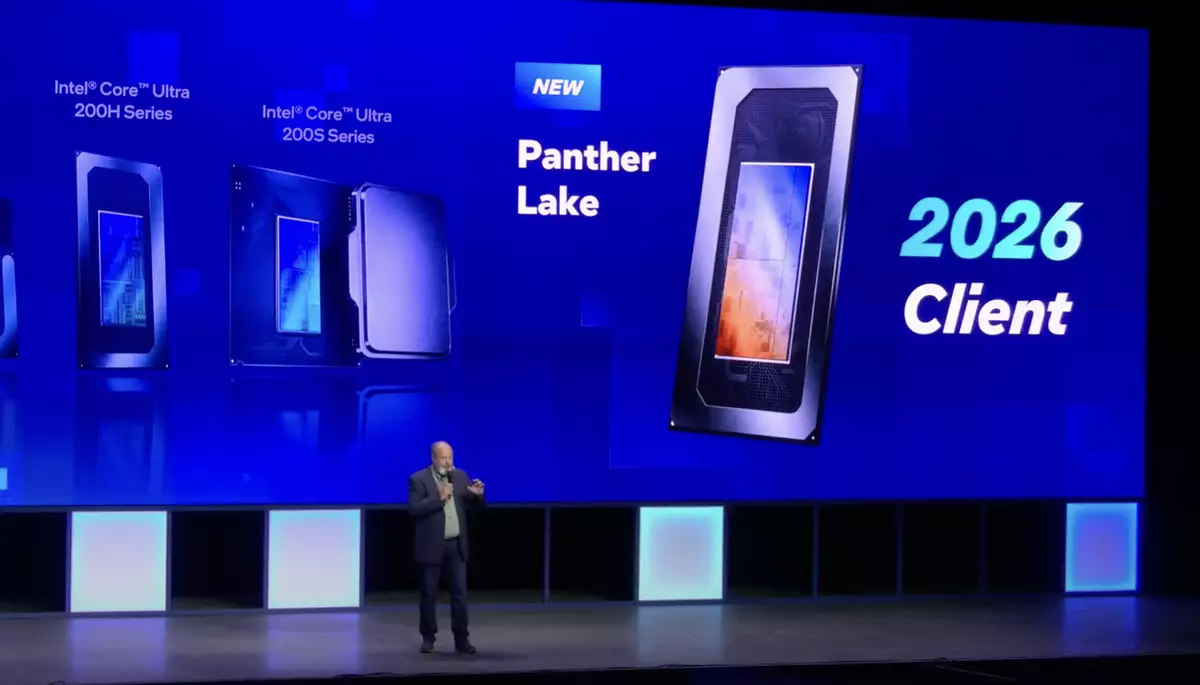Intel is navigating through a transformative phase, marked by the inaugural address of its new CEO, Lip-Bu Tan, during the Intel Vision 2025 event. While some industry enthusiasts were on the lookout for groundbreaking product announcements, the reality was more subdued. Though no dramatic reveals took place, the unveiling of the Panther Lake CPU is noteworthy and signifies the strategic direction Intel is taking in its technological evolution. This CPU is not merely a product; it is an emblem of hope, reflecting Intel’s commitment to regain its prominent place in the competitive chip-making landscape.
The Panther Lake CPU is designed with features likened to its predecessors, Lunar Lake and Arrow Lake. It promises to amalgamate energy efficiency with high performance, suggesting a significant leap for Intel in the mobile computing domain. Jim Johnson, Intel’s head of client computing, underscored this synergy, hinting at a future where laptops can provide robust performance without drastically draining battery life. However, this optimism is tempered with a healthy dose of skepticism, given Intel’s historical challenges in meeting its production timelines.
Understanding Production Timelines
The revelation that Panther Lake would go into production later this year, but only see availability in 2026, raises questions about Intel’s operational capabilities. The delay appears to stem from logistical hurdles and the necessary time required to transition from chip production to consumer availability. This lag is not unusual in the tech industry, particularly for intelically ambitious projects. However, the implications for Intel are substantial; as the gap between design and deployment widens, competitors continue to advance.
Intel originally projected its 18A process technology for production by the end of 2024. Now, with a timeline pushing to 2025 for initial production, there are concerns about market competitiveness against TSMC, which is vastly improving with its N3 and upcoming N2 nodes. The company must not only address its internal delays but also refine its strategic responses to rival advancements.
The Significance of the 18A Node Challenges
The 18A node carries significant weight in Intel’s future plans. This technology doesn’t just enhance transistor density; it also introduces innovative approaches like backside power, which could potentially transform chip efficiency. Yet, these advances mirror Intel’s history, particularly the tumultuous journey surrounding its notorious 10nm process—another ambitious initiative that was delayed and plagued by yield issues. The similarity is troubling: what should have been a leap forward instead became a defining setback.
These historical lessons spotlight the urgency for Intel to engage in rigorous technical risk management and quality assurance protocols. Time spent resolving yield problems erodes potential profit margins and dissuades partnerships with manufacturers who depend on Intel’s performance stability. The onus rests on Intel to not just prove that 18A is attainable but also that it can deliver consistent and competitive products in a marketplace where technology is evolving at an unprecedented pace.
Community Expectations and Industry Impact
The anticipation surrounding Panther Lake isn’t just a corporate concern; it influences the broader tech community, including developers, manufacturers, and end-users. The industry is eager to see how Intel’s latest offerings will impact application performance, gaming, and content creation. The success of Panther Lake and its later brothers in the pipeline will be vital to restoring consumer faith in brand reliability and innovation.
Moreover, Intel’s trajectory under Tan’s leadership is pivotal. Stakeholders are looking for signs of a reinvigorated vision and strategic redirection that not only simplify in-house processes but carve new pathways for growth. The challenge for Tan will be to inspire confidence and inject a sense of urgency into Intel’s R&D and operational departments. A redefined organizational culture that fosters agility and robust collaboration could be key in overcoming these hurdles.
As we navigate the evolving landscape of semiconductor engineering, Intel’s forthcoming moves will be closely observed. Will it successfully emerge from the shadows of its past delays? Or will its promising innovations fail to materialize in a timely manner? One thing is certain: the journey of reinvention is fraught with challenges, but the potential rewards could herald a renaissance for this once-untouchable titan in the tech industry. Intel stands on the edge of a watershed moment, and its next steps will resonate far beyond its corporate walls.

